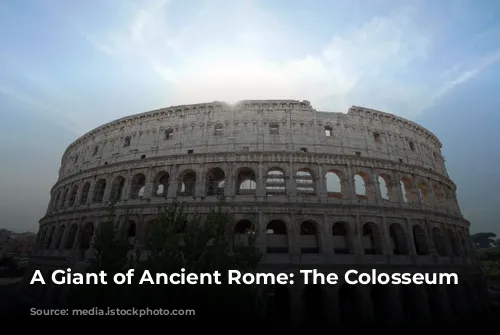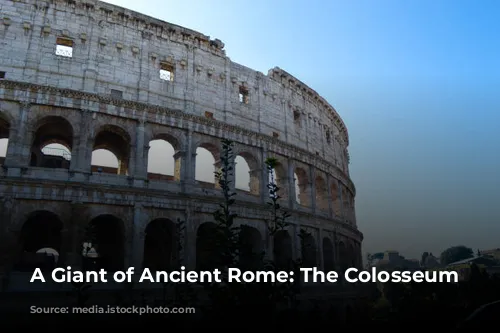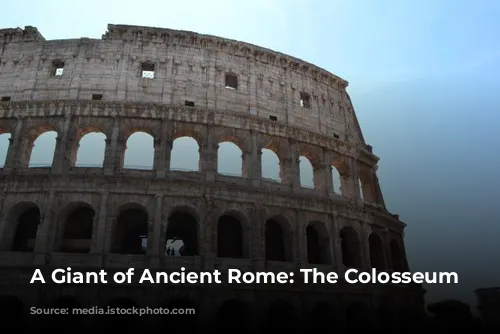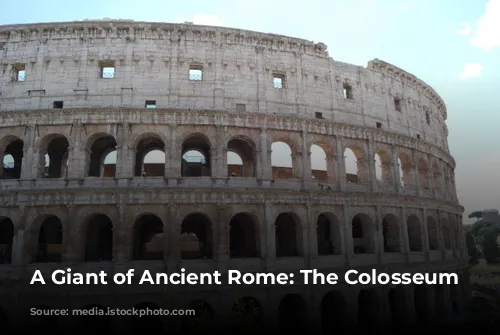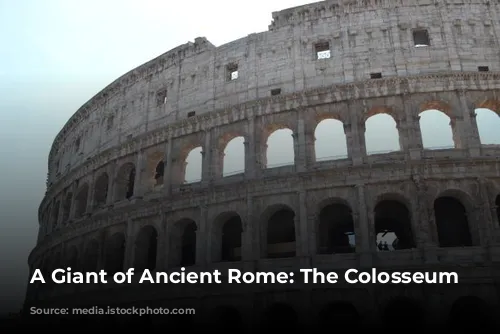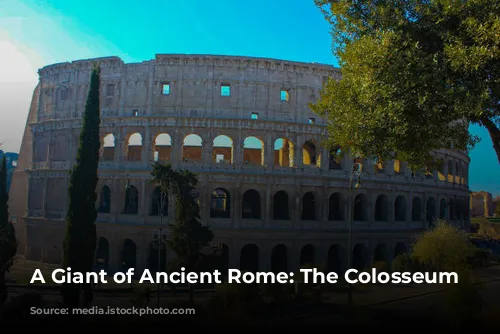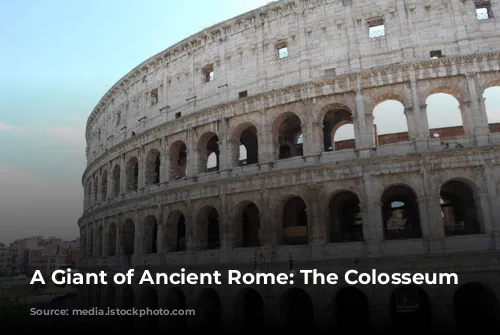The Colosseum, also known as the Flavian Amphitheatre, is one of the most iconic monuments in the world. It’s a massive structure, the largest amphitheatre ever built by the Romans, and stands as a testament to their architectural prowess. Emperor Vespasian, a member of the Flavia family, initiated its construction, and his son, Titus, inaugurated it with a spectacular 100-day grand opening in 80 A.D.
A Grand Opening and a Famous Prophecy
The inauguration was a lavish affair, filled with thrilling events. Thousands of animals were slain in hunts and gladiatorial combats, and the arena was even filled with water for naumachiae, reenactments of naval battles. The Colosseum’s name itself has a fascinating origin. The term “Colosseum” first appeared in a prophecy by the Venerable Bede, a medieval monk, who said, “Rome will exist as long as the Colosseum does; when the Colosseum falls so will Rome; when Rome falls so will the world”. He may have been inspired by the enormous statue of Emperor Nero, known as the Colossus, which once stood near the amphitheatre.
An Architectural Masterpiece
The Colosseum is an impressive example of Roman architecture. Originally gleaming white and clad in travertine stone, the elliptical structure housed four floors, each with 80 arches, and was decorated with statues. It’s remarkable to think that this colossal building was completed in less than ten years. The Romans were masters of the arch, a structural element that effectively distributed the weight of heavy constructions. Think of the magnificent Roman aqueducts – they were built using the same principle. The Colosseum itself can be viewed as a series of aqueducts stacked on top of each other.
A Window into Roman Life
Today, only the skeletal remains of the Colosseum stand, a reminder of its grandeur. The Colosseum served as a quarry for building materials during the Middle Ages, leaving many holes in its walls, but its sheer size and intricate features still astound us. The amphitheatre had a seating capacity of up to 70,000 spectators, offering everyone a clear view of the arena. Roman citizens could attend these events for free, but seating was assigned based on social status, similar to modern theaters. The emperor and other dignitaries had the best seats, while the common people sat in the upper tiers.
A Show of Might and Spectacle
The Colosseum also featured a velarium, an ingenious retractable roof that provided shade to spectators. Operated by a team of 100 sailors from the Imperial fleet, it was a marvel of engineering. Beneath the arena floor, a complex network of lifts and hoists allowed for dramatic entrances and exits of animals, gladiators, and scenery. These special effects added to the spectacle of the games. The shows held in the Colosseum were not just for entertainment but served as a powerful symbol of Roman power and a way to unify the people.
Gladiators: Heroes and Entertainers
The gladiators, the most popular feature of the Colosseum, were not always forced into combat. Many were prisoners of war who chose to fight for freedom, while others were simply seeking fame and fortune. They were divided into various categories, each with its own unique weapons and fighting style. The audience’s cheers echoed through the arena as the gladiators entered, and their fate was determined by the emperor’s thumbs-up or thumbs-down gesture. Victorious gladiators were showered with riches and were celebrated as heroes, enjoying great popularity, especially among the women.
A Legacy of Blood and Spectacle
The shows at the Colosseum were brutal, featuring hunts, animal fights, and gladiatorial contests. They were not for the faint of heart. While the spectacle of these events is captivating, it’s important to remember the reality of the violence and suffering that took place within its walls. The Colosseum, though a symbol of Roman power and ingenuity, also stands as a reminder of a time when cruelty and bloodshed were considered forms of entertainment.
A Monument of Time
After the decline of the Roman Empire, the Colosseum fell into disuse and was used for various purposes, including housing a cemetery and a quarry. During the Middle Ages, it was threatened with demolition but was saved by Pope Benedict XIV, who declared it a sacred monument dedicated to the passion of Christ. Today, the Colosseum is a UNESCO World Heritage site and a testament to the enduring legacy of the Roman Empire. Standing as a ghost of old Rome, it continues to inspire awe and wonder in visitors from around the world. A visit to this magnificent structure is a journey through time, offering a glimpse into the grandeur and brutality of the Roman world.
